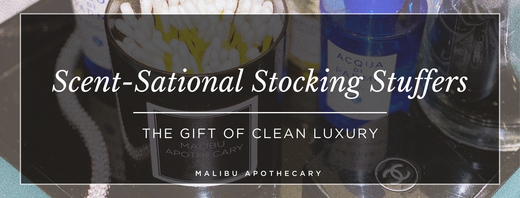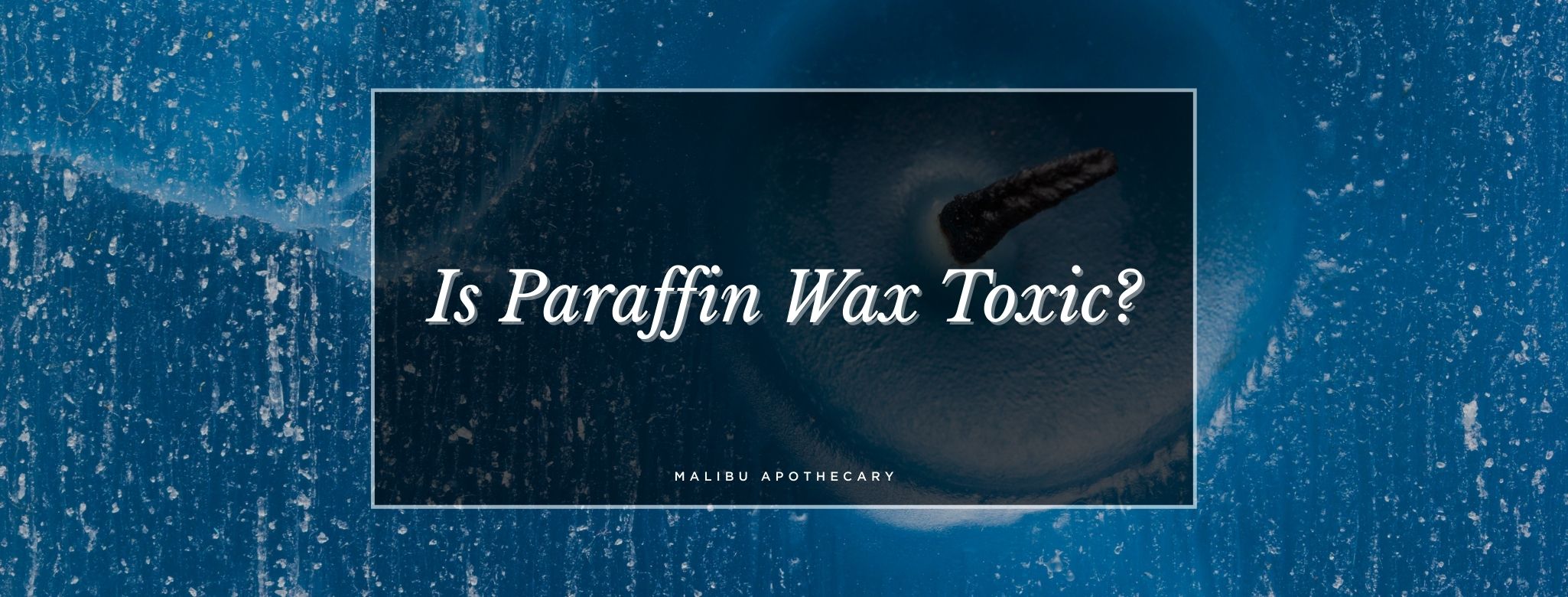Have you ever heard about paraffin wax? If you’re a candle enthusiast, you may have come across this term and even heard whispers about its potential toxicity. But what exactly is paraffin wax, and why does it have such a bad reputation?
Don’t worry—we’ve got you covered. In this article, we’ll break down what paraffin wax is, where it comes from, its potential risks, and, most importantly, the safe alternatives you can turn to for a healthier home.

What is Paraffin Wax?
Paraffin wax is a hard, translucent substance derived from a mixture of solid straight-chain hydrocarbons. It has a melting point ranging from 120° to 150°F. (We know, that sounds super technical!) To simplify, paraffin wax is a petroleum byproduct, meaning it’s created during the process of refining crude oil into fuels like gasoline. [2]
You’ve likely been using paraffin wax products for years without even realizing it. It’s commonly found in everyday items like Vaseline, mineral oil, polishes, wax paper, and even some foods. Yes, that waxy coating on non-organic apples or certain chocolates is likely paraffin-based.
Why is Paraffin Wax Commonly Used in Candles?
Since its introduction in the 1850s, paraffin wax has been a staple in candle-making. Today, it’s estimated that 95% of candles on the market use paraffin wax. Why? It’s affordable, burns consistently, holds fragrance and color well, and has an attractive finish.
Paraffin’s rise in popularity coincided with advancements in refining petroleum and the boom of the U.S. oil and meatpacking industries in the 20th century. By the 1990s, candles saw a resurgence in demand, and paraffin wax became the go-to material for manufacturers due to its practicality and cost-effectiveness. [3]
How Toxic is a Paraffin Candle?
If you read our article on your Burning Candle Questions Answered, you know that paraffin wax candles are a leading cause of indoor air pollution, according to the EPA.
If you’re wondering whether paraffin candles are safe, the answer is a bit alarming. Studies, including one from South Carolina State University, have shown that paraffin wax candles can release harmful chemicals into the air when burned.
These toxins, which include substances like benzene, toluene, and formaldehyde, are linked to various health issues such as respiratory irritation, allergies, and even cancer. Burning paraffin candles in unventilated spaces increases the risk of exposure to these chemicals, making indoor air pollution a real concern. [5]
Some of the common toxins found in paraffin wax candles include:
- Trichloroethane
- Chlorobenzene
- Ethylbenzene
- Styrene
- Xylene
- Acetone
- Carbon tetrachloride
Frequent exposure to these pollutants can contribute to long-term health problems, especially for those who burn candles regularly.
For a healthier alternative, explore Malibu Apothecary’s clean-burning candles, which are made with all-natural coconut and soy wax. Our candles are free of harmful toxins and designed to create a safe, luxurious ambiance in your home.
Environmental Impacts of Paraffin Wax
Aside from its health risks, paraffin wax also takes a toll on the environment. As a byproduct of crude oil, a nonrenewable resource, its production contributes to air pollution and environmental degradation. Crude oil extraction destroys ecosystems, endangers wildlife, and has resulted in catastrophic oil spills. [1]
Burning paraffin wax candles contributes to air pollution by releasing carbon emissions and particulate matter. These pollutants not only harm the planet but also exacerbate health risks for humans.
Switching to natural, sustainable waxes like coconut or soy helps reduce environmental harm while promoting cleaner indoor air. At Malibu Apothecary, we’re committed to creating eco-friendly candles that prioritize both your health and the planet.
Why Choose Natural Wax Alternatives?
While paraffin is popular due to its affordability and ease of use, it comes with significant drawbacks. It’s not biodegradable, isn’t made from renewable resources, and releases toxins during combustion.
Natural waxes, on the other hand, offer a cleaner and safer burn. Here’s why they’re worth the investment:
- Health Benefits: Natural waxes like coconut and soy produce little to no soot and are free of harmful chemicals.
- Eco-Friendly: These waxes are biodegradable and made from renewable resources, reducing their environmental footprint.
- Better Performance: Coconut wax, in particular, has a longer burn time and superior scent throw, making it a luxurious option for candle lovers.
By choosing candles made from sustainable materials, you’re making a positive impact on both your health and the environment.
Malibu Apothecary’s Commitment to Clean Candles
At Malibu Apothecary, we believe that luxury shouldn’t come at the expense of your health or the planet. That’s why we use a blend of natural coconut and soy wax in all our candles. Our clean-burning candles offer the same high-quality burn performance as paraffin but without the toxins.
Not only do we prioritize health and sustainability, but our candles are also crafted to deliver an elevated sensory experience with thoughtfully curated fragrances inspired by the beauty of coastal destinations.
The Bottom Line
Paraffin wax candles may be widely available, but they’re not the safest or most sustainable option for your home. From indoor air pollution to environmental concerns, the risks outweigh the benefits. By choosing natural wax candles, you’re opting for a cleaner, greener, and healthier lifestyle.
Ready to make the switch? Browse Malibu Apothecary’s collection of all-natural candles today and transform your space with luxury candles that you can feel good about burning.
Sources:
[1] Gattuso, Reina. “What Is Paraffin Wax, and Why Is It in Your Beauty Products?” Public Goods Blog, 27 July 2020, blog.publicgoods.com/what-is-paraffin-wax-beauty-products/.
[2] Britannica, The Editors of Encyclopaedia. "Paraffin wax". Encyclopedia Britannica, 9 May. 2018, https://www.britannica.com/science/paraffin-wax. Accessed 20 June 2021.
[3] Osmologyco. “Everything You Need To Know About Candle Wax.” Osmology, 27 Mar. 2021, www.osmology.co/blog/which-wax/.
[4]Healthline, https://www.healthline.com/health/are-candles-bad-for-you#summary
[5] Emission products of petroleum-based candles, Ruhullah Massoudi and Amid Hamidi, South Carolina State University, presentation before American Chemical Society symposium session, 2:15-2:35 p.m., 19 August 2009, Washington DC. http://oasys2.confex.com/acs/238nm/techprogram/P1291704.HTM
Read more

Fill your holiday stockings with Malibu Apothecary’s scent-sational gifts! From eco-friendly candles to phthalate-free perfumes, discover luxurious, non-toxic stocking stuffers that inspire wellnes...

Whether you're practicing Dry January or just trying to be a little more sober curious lifestyle, here are 22 alcohol free things to enjoy in Dallas!

3 comments
One other thing, I’ve been looking for a candle maker and seller like you and will be happy to order and try your candles out that I already know from this write up that I’ll love! Thanks for your earthly works! God speed!
Doug
Thanks, I didnt have all the facts on candle wax.
Olga
I hope this message finds you and your loved ones safe and well… Thanks so much for your passionate time for this very informative reading…
We need to return to Mother Nature…
Much love and respect
Claudio…
Claudio Silvaggi
Leave a comment
All comments are moderated before being published.
This site is protected by hCaptcha and the hCaptcha Privacy Policy and Terms of Service apply.